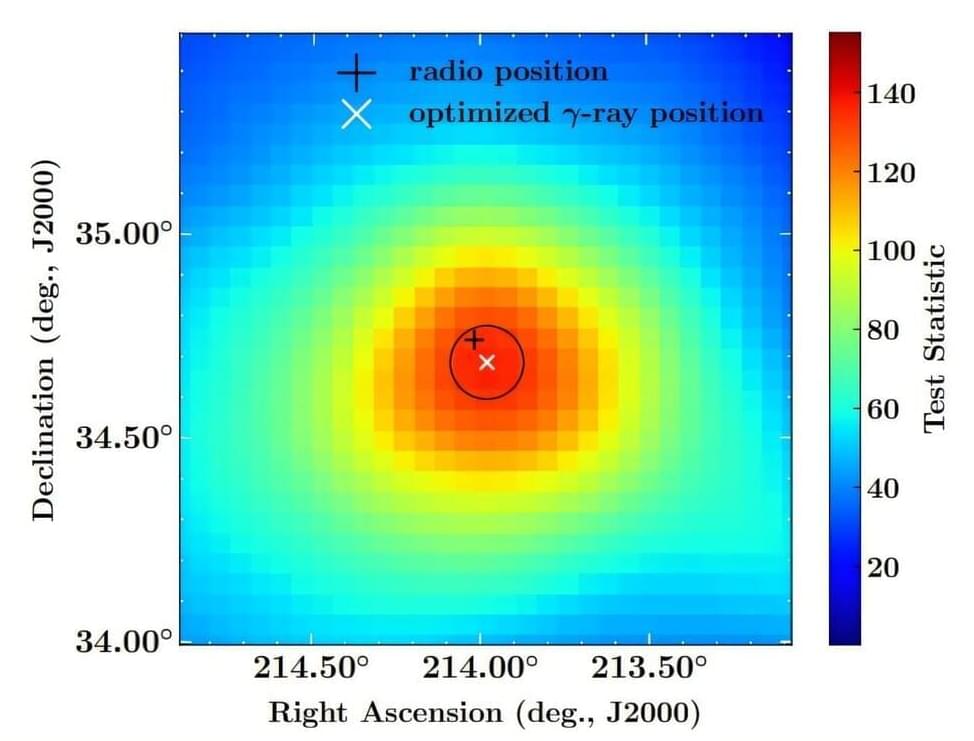Indian astronomers have performed a multiwavelength study of a gamma-ray emitting compact symmetric object known as DA 362. Results of the study, presented in a research paper published December 17 on the pre-print server arXiv, yield more insights into the nature of this enigmatic object.
Compact symmetric objects (CSOs) are young jetted active galactic nuclei (AGN) with an overall projected size below 3,300 light years. Although CSOs are still not well investigated, observations found that they showcase symmetric radio morphologies and are likely to be in the early stages of their evolution with kinematic ages smaller than a few thousand years. To date, only four CSOs have been found to emit gamma-rays.
The newest gamma-ray emitting CSO is DA 362, also known as B2 1413+34. It was initially classified as a blazar candidate of uncertain type, associated with a gamma-ray source designated 4FGL J1416.0+3443.









